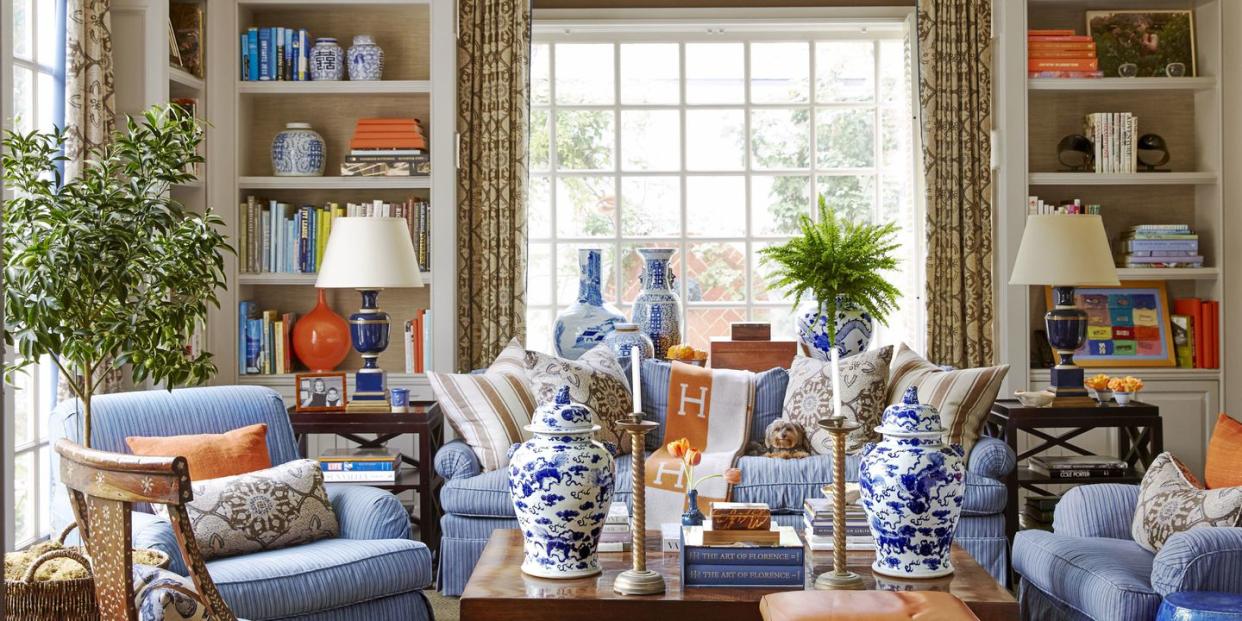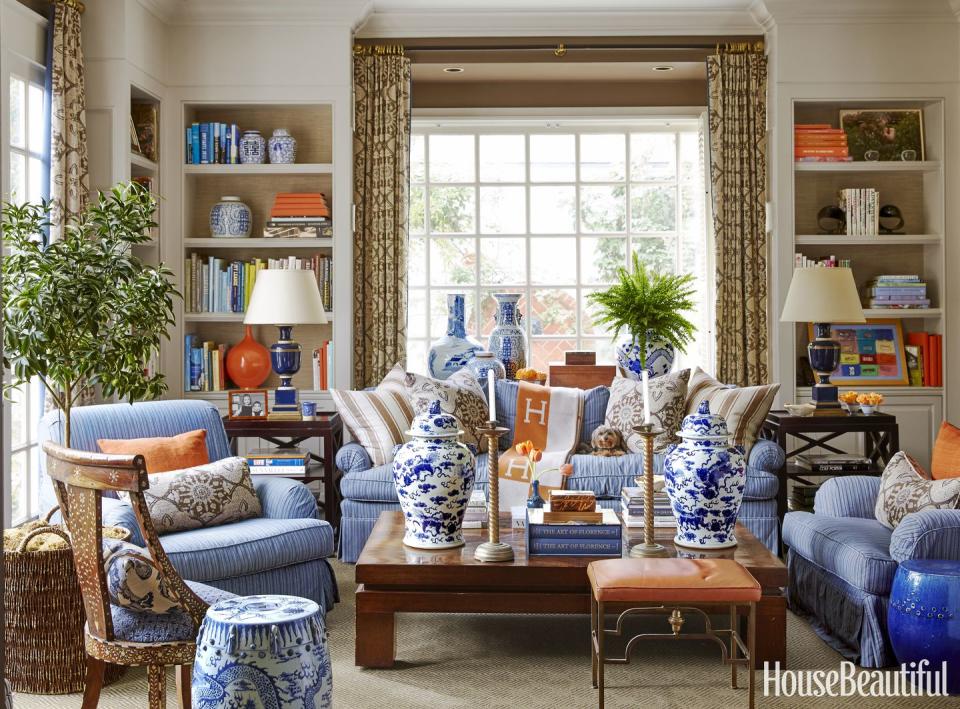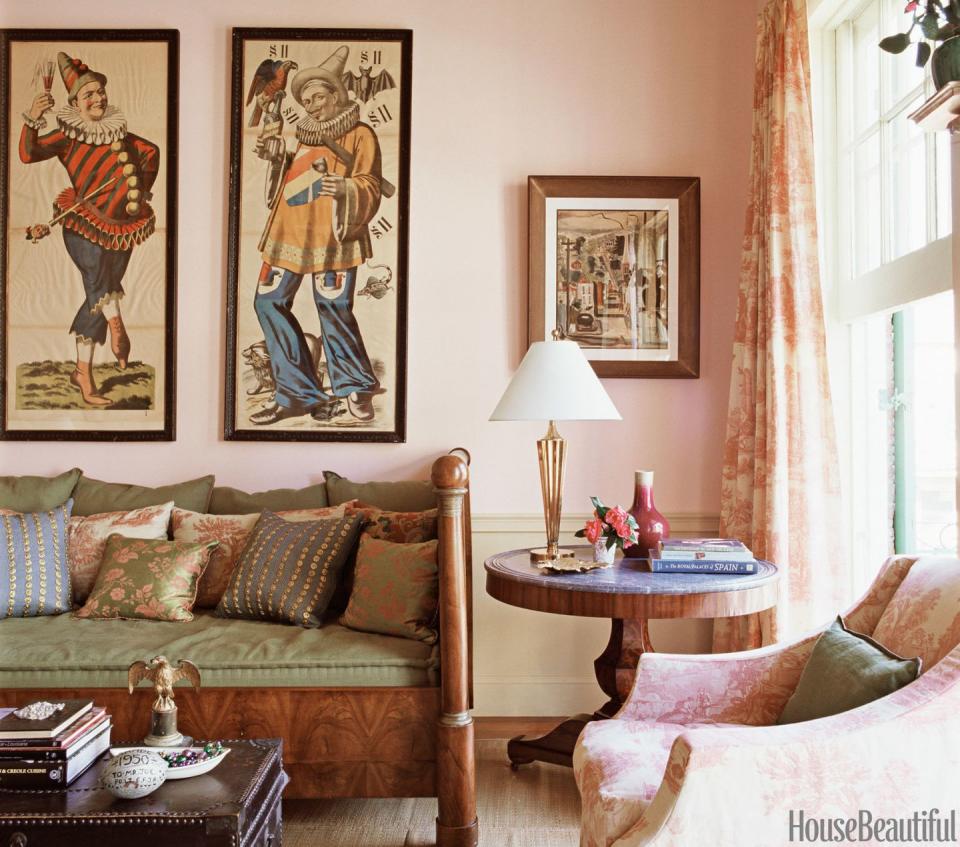5 Reasons Why Marie Kondo's Method Is All Wrong, According to Designers


It's official: Marie Kondo has indelibly changed our world. With her gentle pleas to "tidy up," the beloved organizing expert, author, and Netflix star has inspired a generation to cast a scrutinizing eye on their homes, belongings, and even their relationships.
I've made no secret of my own gripes with Marie's method, and I've long known many more maximalist-leaning designers who agree with me. And finally, several of them have spoken out in defense of clutter. In a panel discussion in Los Angeles last week, 1stdibs' Anthony Barzilay Freund chatted with four top designers, all of whom proclaim to love clutter. By way of introduction, Freund brought up Kondo, who, he cheekily quipped, "has sold more than 9 million copies of her book [The Life-Changing Magic of Tidying Up], which are now cluttering bookshelves and nightstands everywhere."
"There’s sense in what she says that we should live with the things we truly love," Freund continued-"but what if you love lots and lots of stuff?" That, indeed, is precisely my dilemma, and also one often faced by designers Mary McDonald, Thomas Jayne, Kerry Joyce, and Tom Stringer. In a lively discussion, the foursome made the case for clutter-here's how.

The collecting is the fun.
"I love stuff," confesses McDonald. "I'm a total hoarder person. I have storage, I buy stuff for houses I do not have," she jokes. "It’s a lot cheaper than buying the house." With that said, the admits an undeniable logic to Marie-with a disclaimer.
"I think it's true what she says, but all this stuff brings me joy. Ever since I was little, I liked to collect things, even unimportant things," the designer recalls. "Like things of the same color, small pink porcelain or ceramics. Having that in the back of my mind is very fun for me. If I'm at a junk store and I see a little thing, no, I don’t need it, but it brings be joy. I love the journey of collecting."
Things tell a story.
Another reason you'll rarely see a designer furnish a home with a simple sofa and console and call it a day? "Design is storytelling, and the objects in an interior should add to that narrative," argues Tom Stringer. With his clients (and himself), Tom aims to "clutter" spaces with items that tie to an interest, to ensure joy is sparked with each.
"You find a passion and you follow it," he says. "I don’t think the things around us need to be precious or always important, but they need to tell something about who we are, our past, or where were headed."

Your home should be sentimental.
Speaking of telling of the past, Kerry Joyce (who, you might be surprised, calls himself a minimalist) has an easy differentiator for determining what falls into the more reviled definition of the word "clutter." He explains, "if the clutter has no memory, it's clutter; if it has memory, it's not clutter."
Thomas Jayne agrees. "As designers, we can remove these things if they have no meaning, but restore the ones that do," he says. "If they say, 'my grandmother gave this to me on my wedding,' okay. If it's, 'I bought this because it's all I could afford'...then it can go."

Many items can create one focal point.
With that said, though, there are ways to turn even less meaningful clutter into a design moment. "I designed this gorgeous bookshelf for a client," Joyce recalls. "It was perfectly arranged and beautiful." But, as a truly lived-in space, that didn't last-and Joyce didn't mind.

"As time went by he has shoved books in there sideways, on top of one another any space there could be a book there is one," the designer laughs. "He’s a traveler, so he collects objects and has those in there." And, he admits? "It’s beautiful. It’s meaningful and it’s him."
Jayne recalls a similar incident, of a client whose home had a vitrine which every generation had put things in. "There are hot wheels from the 50s, clay models from preschool, trophies," he says. And while none of these have particular value, Jayne argues "that makes a story. And the vitrine corrals it. Thats a trick: Put all the clutter in a box!"
Clutter is comfortable.
Finally, as Thomas pronounces simply: "Clutter creates comfort. We’ve all been in a new building with one sofa and a table. That space isn’t comfortable until you add things to it."
So maybe, if you're feeling inspired by Marie, instead of looking to excise the things that don't bring joy, consider going on the hunt for things that do. Or, as Tom puts it, "find something that motivates you to collect in a positive direction." Now that's advice I can get behind.
Follow House Beautiful on Instagram.
('You Might Also Like',)

